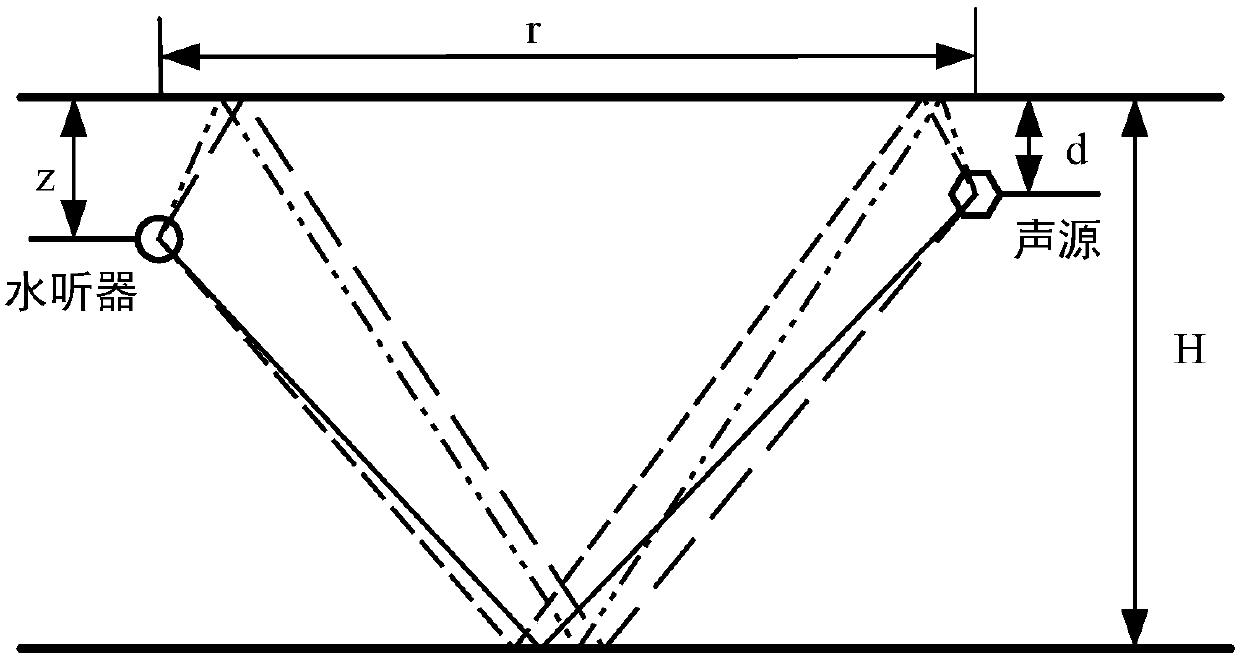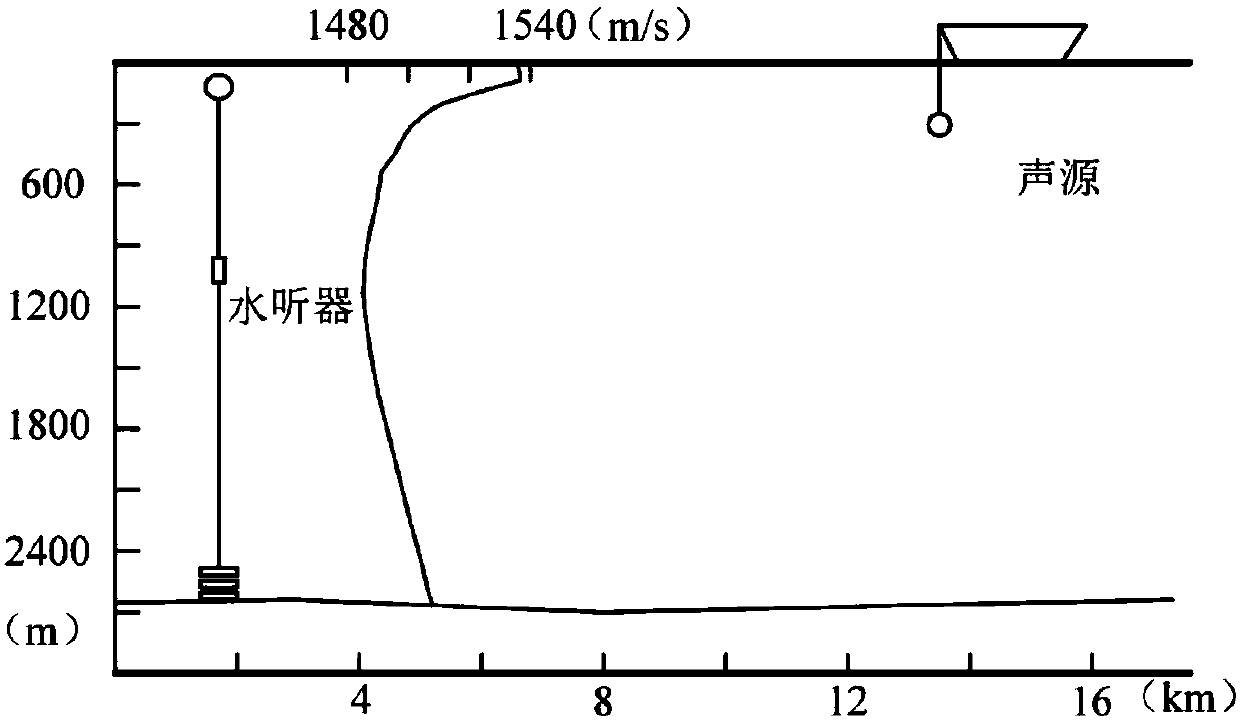Single-hydrophone sound source passive positioning method in deep sea environment
A deep-sea environment, passive positioning technology, applied in the field of sonar, underwater acoustic detection, can solve the problem of a large number of hydrophones, active sound and so on
- Summary
- Abstract
- Description
- Claims
- Application Information
AI Technical Summary
Problems solved by technology
Method used
Image
Examples
Embodiment Construction
[0041] Now in conjunction with embodiment, accompanying drawing, the present invention will be further described:
[0042] Step 1: Deploy a single hydrophone in the sea in the form of a submersible buoy or a buoy, and obtain the depth information of the hydrophone through a depth sensor.
[0043] The depth z refers to the distance between the hydrophone and the sea level. The depth of the ocean is H. In the deep sea environment, the depth of the sound source is d, and the horizontal distance between the sound source and the hydrophone is r. When dB , T SB , T BS , T SBS .
[0044] Step 2: For the received broadband signal, by performing autocorrelation processing on the signal, six relative time delays between the arrival signals of the four paths can be obtained without prior information of the signal.
[0045] The received signal is set as s(t), and the autocorrelation of the signal can be expressed as
[0046]
[0047] where T is the signal length, ( ) * denotes the...
PUM
 Login to View More
Login to View More Abstract
Description
Claims
Application Information
 Login to View More
Login to View More - R&D
- Intellectual Property
- Life Sciences
- Materials
- Tech Scout
- Unparalleled Data Quality
- Higher Quality Content
- 60% Fewer Hallucinations
Browse by: Latest US Patents, China's latest patents, Technical Efficacy Thesaurus, Application Domain, Technology Topic, Popular Technical Reports.
© 2025 PatSnap. All rights reserved.Legal|Privacy policy|Modern Slavery Act Transparency Statement|Sitemap|About US| Contact US: help@patsnap.com



